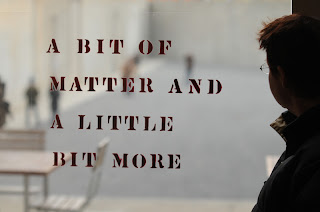














Georges Perec´s 1974 novel “species of spaces and other pieces” explores the spaces in which we inhabit, initially referring to the page of the book and then proceeding from space to space: the bed, bedroom, the apartment, and so forth, and thus bringing up the idea of "the country". Perec examines the idea of space; as stated in the forward “The subject of this book is not the void exactly, but rather what there is round about or inside it. To start with, then, there isn’t very much: nothingness, the impalpable, the virtually immaterial; extension, the external, what is external to us, what we move about in the midst of, our ambient milieu, the space around us.” Perec illustrates the mundane aspects of these spaces, which in turn presents unexpected sides of these typical spacial concepts. Perec mentions the idea of "imaginary limits" when it comes to boundaries between countries, and the amount of variations that consist within bordering countries, for example, signs, shape of houses, shape of fields, etc, but also the basis by which we measure space: meridian line, equator, sea level. In addition, the value that space has, and the amount of fighting that has resulted over even the smallest of areas. Perec mentions that space is vulnerable, fragile, it wears with time, but he also mentions “space as doubt”, that we are the creators of our own interpretation of a variety of spaces, but that space is defined as space because we define it, we indicate its existence.
With Perec in mind, the idea that space exists as a concept in our minds, can mean that space potentially exists differently from one person to the other; that a country can be uniquely defined as not a fixed entity but rather ever changing.














